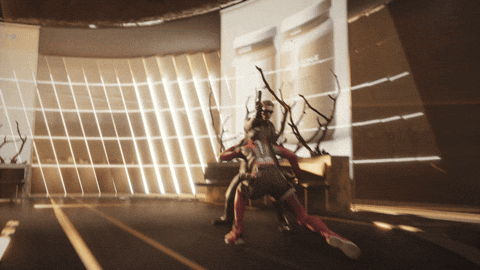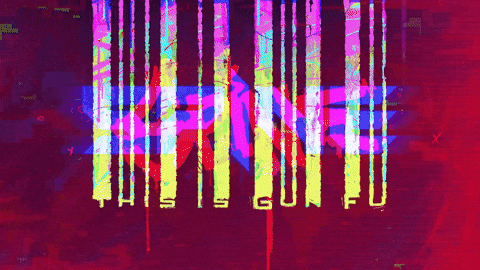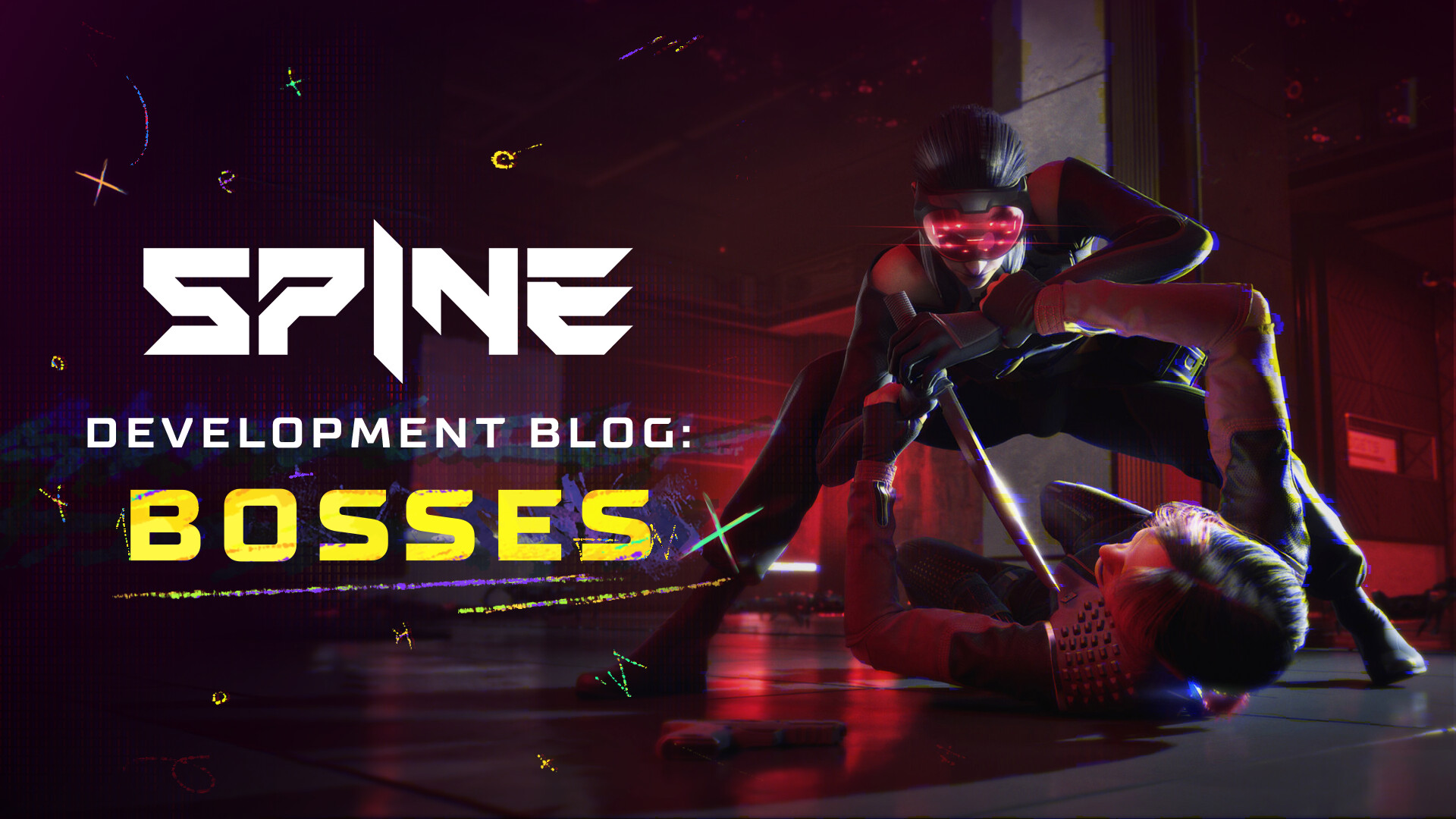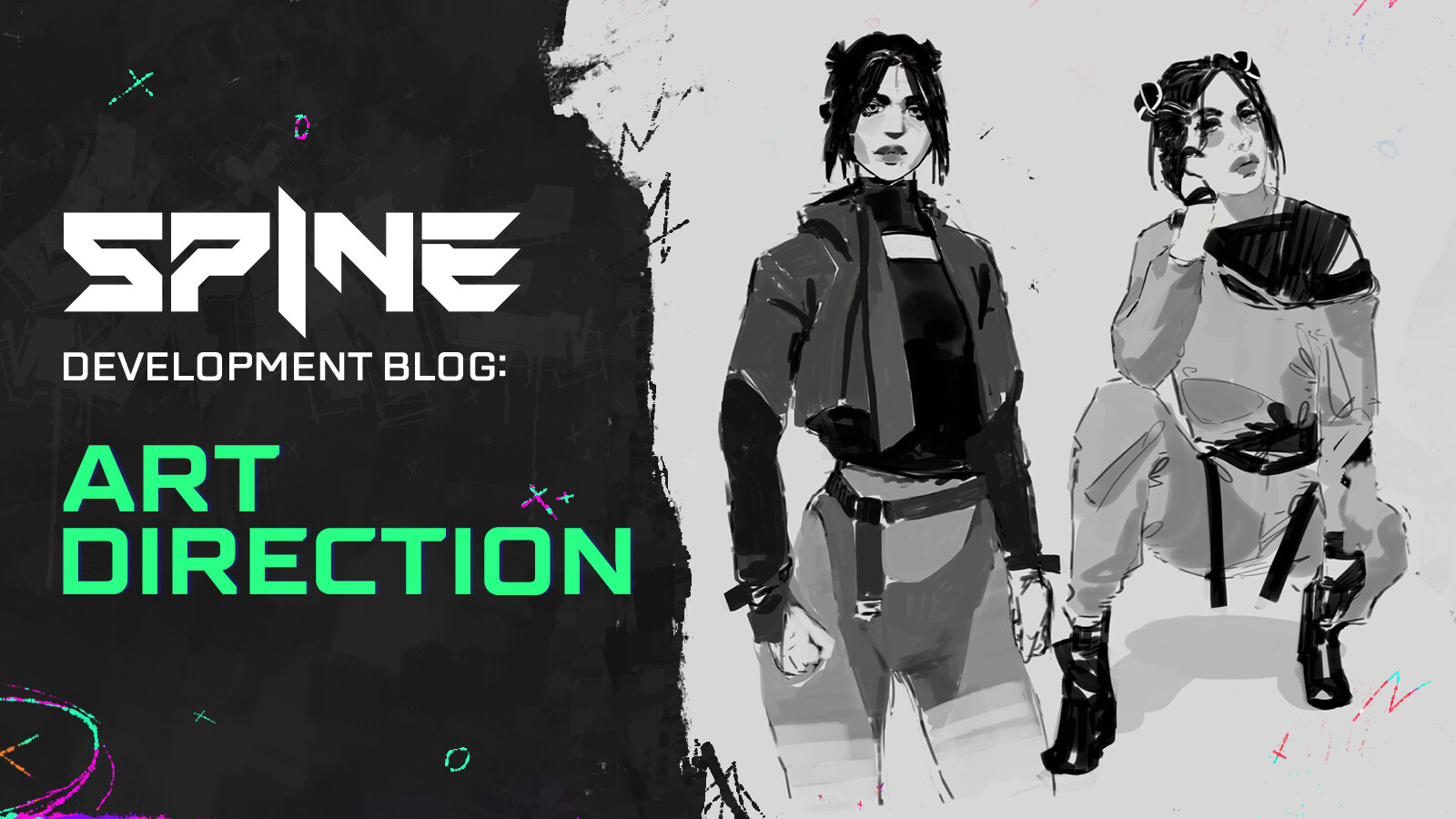SPINE DEVELOPMENT BLOG: CYBERPUNK STORY
Hello, Tensor Citizens!
Cinematic. Dynamic. Depth.
These three words define the SPINE and its narrative. In this blog, SPINE screenwriter Svetlana Stakhneva takes us through the challenges our team faced and the choices made to tell an important story. No spoilers!
Inspiration and Themes
Our favorite films include Tarantino’s work, The Matrix, Equilibrium, and the John Wick series. Every time we rewatch them, Svetlana asks herself:
What if we weren’t just viewers but participants?
What would it feel like to be a badass movie hero, winning brutal fights and taking part in cinematic shoot-outs?
That’s why, when developing SPINE’s narrative, we strive to tell a true action story set in a cyberpunk world—one that blends classic influences like Blade Runner and Ghost in the Shell with Black Mirror. This commitment to Cyberpunk game storytelling lets us build a memorable story while following game narrative design principles.

The main theme of our game is the impact of technology on society. The game’s world is dystopian, reflecting our kitchen-table conversations about how AI will change our lives:
Can we trust it? How will the state react to the inevitable changes?
No one will hand you ready-made answers, but we’ll give you plenty to ponder, immersing players in a plot rich enough to stand alongside other games with deep storylines.

World Creation
The world of our game is built on reflection and analysis. Every detail, from locations to characters, serves our cinematic feel and strengthens the overarching SPINE story and lore.
Tensor City’s streets are bathed in tech yet remain intimate and relatable. We aim to show a realistic dystopian future where everyday life is saturated with gadgets, while dictatorship hides behind a colorful but false façade.

Technological progress itself isn’t bad; problems start when the wrong people wield it. That’s why a city full of high-tech marvels can still drown in violence, where everyone struggles to survive. Each neighborhood—gleaming high-rise or crumbling slum—tells its own rise-and-fall tale, reflecting humanity’s complex bond with technology.

SPINE Characters and Motivations
If you read our previous Development Blog about SPINE’s Art Direction, you know contrast drives much of our visual style; we follow the same rule in the narrative.

Redline embodies our fears and hopes. Her bond with the tactical implant, Spine, shows how we learn to trust AI. This relationship frames the journey of main characters. Opposing her is Tensor, the AI that rules the city, backed by the ruthless Judge. Together, they reflect real-world concerns about technology gone awry.
Some may say Redline herself is the “red line” of resistance against a drab, bureaucratic Judge. We shape every hero and villain from real-world human traits, hoping players feel a genuine connection.
Plot and Narrative
We want you to be the action-movie hero. SPINE’s gameplay nails the “action”; the rest of the game must deliver the “movie.”
Cinematography matters: camera moves must add meaning, not just style. Lighting relays mood, while environments “speak” between the lines—hallmarks of strong SPINE narrative design and top-tier storytelling. These choices reinforce the game’s narrative and elevate the overall story, putting SPINE among games with deep storylines.
Play closely and you’ll notice the scenery, the camera, even color palettes telling their own tale.

Take a spoiler-free mission: Redline is losing hope, as if a swamp drags her down. Level design blocks clear paths; lighting disorients; enemy waves slow progress. Music feels hostile, and the boss fight seals the mood. Every tool serves the moment—why we favor a linear plot that lets us fine-tune emotion and pace.
Dialogs and Player Interaction
Dialogs do more than relay information—they reveal status, beliefs, and personality of every character. We keep lines short yet packed with feeling and humor; in a grim world, you need both a joke and a gun. Consider Capo (from our previous blog’s concept art). Fluent in song lyrics and stage flourishes, he lapses into rough slang when his gang can’t follow his metaphors. His speech springs straight from his life story—proof that every cadence supports character depth.

Challenges and Solutions
Crafting the narrative is tough. Ideas bounce through many teams, shaped by tech limits and creative debate. This process, guided by tight SPINE narrative design, blends voices into one compelling whole. We invite everyone, even fans, to enrich the plot. A contest in our Official Discord Server for naming the in-game fight club proved that community ideas can boost world-building.
Future and Narrative Development
The idea of expanding the SPINE universe lies ahead. We’re focused on the game now, yet side projects, like the Webtoon SPINE: Bullet Dancers, extend the story and flesh out the characters.
Our partnership with Story Kitchen may even bring SPINE to screens, ensuring our narrative lives on in other media and keeping it as a benchmark for games with deep storylines.
But for now, we’re heads-down, crafting the best action story we can. Stay tuned!


